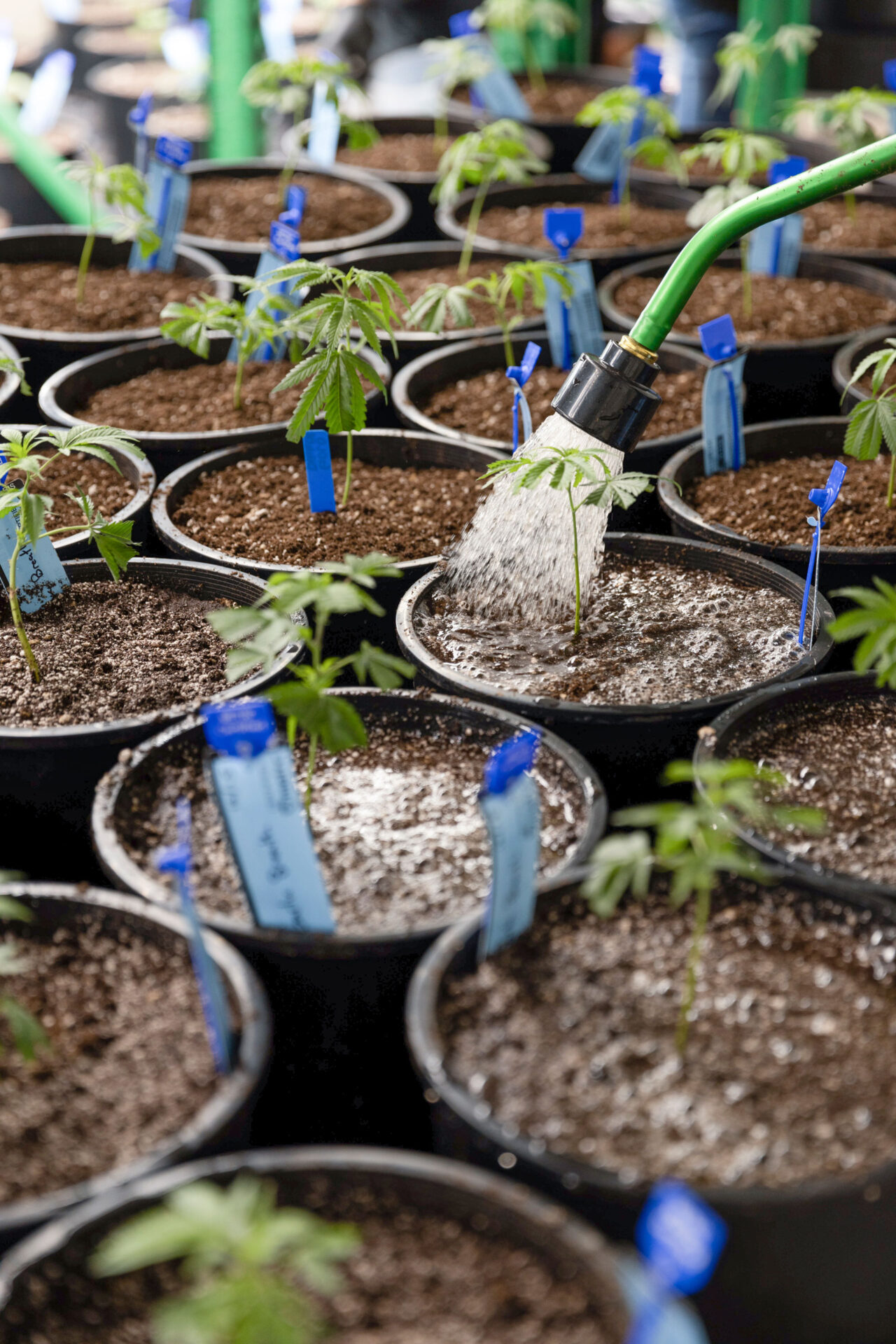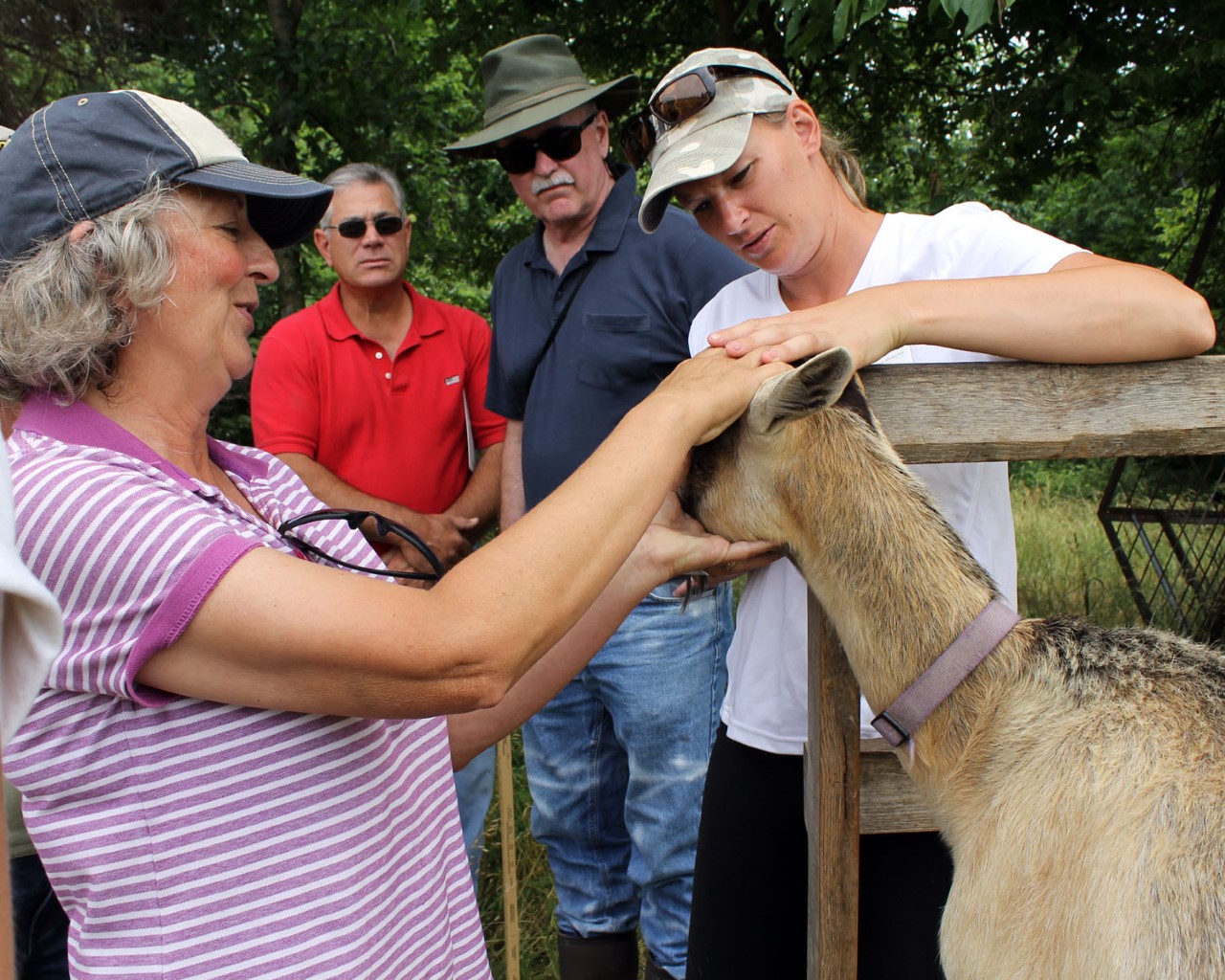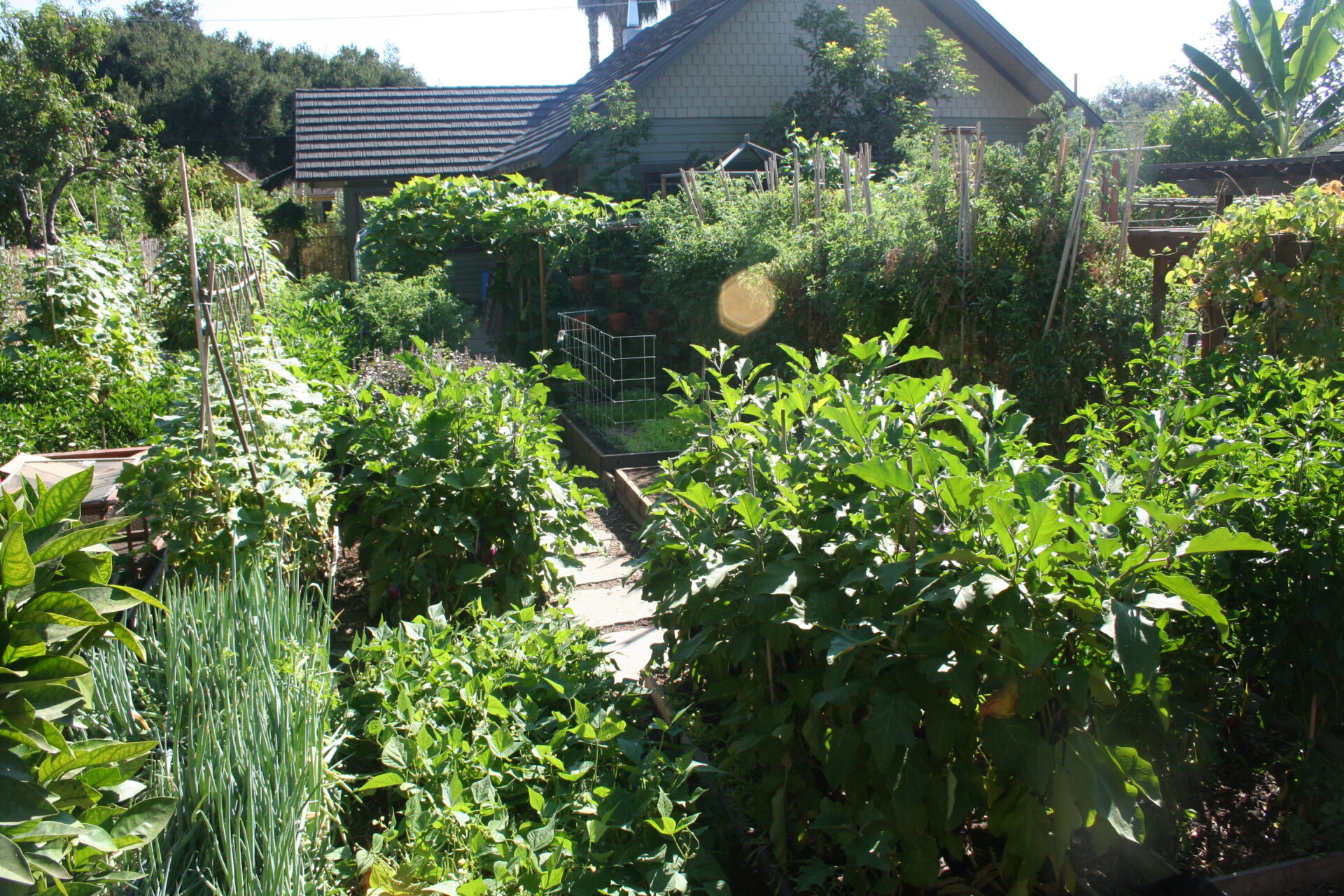Farmers and ranchers make decisions every day about production and processing, marketing approaches and certification programs in the context of real-life people, places and circumstances. Your farm and ranch business depends on agricultural markets, consumer preference trends, trade policies, regional infrastructure, and quality of life for your family and community. Organic certification to the United States Department of Agriculture (USDA) organic regulations is a practical option that provides a firm foundation on which to build healthier production systems and thriving commerce. Agricultural systems are diverse with respect to crop and livestock production systems, handling or processing options, marketing strategies, import-export policies and other applicable regulations. Organic cropping systems include diverse combinations of annual vegetables, small fruits and berries, perennial fruit and nut crops, mushrooms and sprouts, herbs and flowers, fiber crops, grains and legumes, feed and forage, pasture and range. Livestock operations produce a range of food and fiber, eggs and meat, milk and honey from many different species and breeds of insects, poultry, swine, and ruminants. Whether your organic crop and livestock enterprises are stand-alone production enterprises, or diversified and integrated businesses with processing, storage or distribution, the elements of your agricultural business are all addressed by the USDA organic regulations.
The following questions about how to find the regulations, feasibility of certification, cost-benefit analysis, as well as evaluation of alternative and complimentary programs for market access and regulatory compliance. They are intended to guide your decisions about becoming certified organic to USDA organic regulations, and help you navigate the certification process. These considerations and the references and resources provided will help you determine whether organic certification is a good choice for your operation, and if this is the appropriate time to begin.
What are the Requirements?
USDA organic regulations describe the practices and recordkeeping necessary to represent a farm, ranch or handling/processing facility and its products as certified organic. These regulations, found in the Code of Federal Regulations (CFR), Chapter 7, Part 205, detail the production standards for crop and/or livestock production, as well as handling (processing) of agricultural products. They also specify procedures for establishment, accreditation, and operation of certification agencies. To make it easier to find and read the sections of the regulations that apply directly to producers and handlers (and navigate around the administrative, certifier accreditation and procedural requirements) the National Center for Appropriate Technology’s (NCAT’s) ATTRA Sustainable Agriculture program has compiled a set of excerpts of the key regulations relevant specifically to crop production, livestock production and handling (processing) activities. Requirements that are common to all types of certified organic operations include development of a written organic production and handling system plan (Organic System Plan, or OSP), and recordkeeping requirements. Each of these publications contains verbatim excerpts of the regulations for certification of crops, livestock, or handling. Although summary paraphrases (including this article) may offer a useful introduction and overview, and guidance documents provide interpretation and explanation of the regulations, there is no substitute for referring directly to the regulatory text. See references
Feasibility of Compliance with USDA Regulations
Does your farm or ranch have the capacity to comply with the applicable USDA organic regulations? Can you show land use history of three years without prohibited materials? Do you practice crop rotation to conserve soil, build organic matter, manage pests and nutrients, breaking pest cycles and enhance biological diversity? Are you committed to searching for and using organic seed and planting stock unless you can document lack of its commercial availability? Does your pest management rely on preventive practices, biological, mechanical and physical controls, using allowed materials with appropriate restrictions only when all other efforts are insufficient?
Are well-adapted livestock from compliant sources? Do they receive 100% organic feed and allowed supplements? Are animal health care practices preventative, using only allowed vaccinations, biologics and medicines? Do livestock living conditions include access to pasture for ruminants, outdoor access for all animals (any confinement duly justified), with fresh air, clean water, direct sunlight, shade, shelter, bedding and natural comfort behaviors as appropriate to the species? Can you describe ways you maintain or improve natural resources of your operation?
Do you have a recordkeeping system including a clear audit trail to track production through harvest, storage, transport, processing and sale? Do you take appropriate measures, during production and after harvest, to prevent contamination by prohibited materials, heavy metals, nutrients and pathogens?
Are there any significant barriers to organic compliance for your operation? Do your production systems face any significant challenges, such as pests or diseases, that could not be addressed with compliant preventive practices and materials allowed for use in organic production? For example, USDA organic regulations prohibit use of antibiotics on organic livestock, yet require a livestock producer to treat sick animals humanely, even if it means using a prohibited medication. This means that the individual treated animal loses its organic status, but as long as there is an adequate system in place to identify and segregate that animal from the organic herd, the rest of the operation can remain certified organic. In this case, your organic system plan would have to list the antibiotic, and also include a description of procedures to be followed if an animal were to be treated.
What about the Paperwork?
While organic certification requires recordkeeping and audit trail documents that track products from seed or animal origin, through production practices and to final product sale, recordkeeping is also a good business practice. A majority of records required for organic certification benefit any agricultural business, regardless of certification status. Organic recordkeeping can facilitate completion of tax returns, enterprise cash flow budgeting and loan applications. In addition, organic recordkeeping can complement and reinforce regulatory requirements related to environmental health and food safety laws. For example, the Food and Drug Administration Food Safety Modernization Act (FSMA) requires traceability of vegetables, and USDA’s inspection, grading and labeling requirements for livestock products. In light of your overall business management, you can develop your recordkeeping systems to serve multiple purposes simultaneously. Producers and processors alike recount how the records they kept for organic certification enabled them to track practices, ingredients or products; to identify patterns, follow correlations, and the clarify causes, and more readily remedy problems, or replicate and expand upon successes. A discussion of the multiple benefits of recordkeeping is found in several articles in the NCAT/ATTRA newsletter issue focused on that topic: http://attra.ncat.org/newsletter/attranews_1105.html.
Organic regulations require that certified operations develop and maintain a recordkeeping system that is adapted to the business, fully discloses all activities and transactions, and demonstrates compliance with the regulations in sufficient detail as to be readily understood and audited. They must be available for inspection, and kept for 5 years after their creation. Records may be in written, visual, or electronic form. There is no specific format for recordkeeping that is required. A number of sources, including organic certifiers, NCAT/ATTRA, and the NOP make organic recordkeeping forms or templates available to use or adapt. Documentation Forms for Organic Crop and Livestock Producers. The introduction describes three main components of documenting compliance with regulations: the OSP describes the plan, documents show transactions between businesses, and records track on-farm activities. Sample forms are found in: Crop Documentation Forms, and Livestock Documentation Forms. Many commercial recordkeeping programs are available as well. Several types of recordkeeping strategies were reviewed in an Organic Recordkeeping Webinar Series for Crop Producers presented by the California Certified Organic Farmers (CCOF) Foundation, by Ann Baier on August 20, 2018 and Thea Rittenhouse on September 2018 https://www.ccof.org/blog/organic-recordkeeping-webinar-series-growers. Factor in whether an organization can help streamline the recordkeeping and inspection processes for more than one certification at a time.
Will it Pencil Out? Accessibility and Affordability of Organic Production
How do the economics of organic production work for my crops and/or livestock? The Organic Market Overview by USDA’s Economic Research Service https://www.ers.usda.gov/topics/natural-resources-environment/organic-agriculture/organic-market-overview, and the Organic Trade Association show sales of organic food, fiber and other products growing steadily every year since 2005, with price premiums remaining high, and organic consumers increasingly mainstream. The outlook on demand and price for organic products appears to be robust, such that the higher organic input and management costs may be offset by price premiums for certified organic products. The transition period can be a hurdle if your operation has previously relied on materials prohibited in organic production. USDA regulations specify a transition of three years between the last use of prohibited materials and the sale of a certified organic crop. During that time, the learning curve is steep. Organic management and input costs are higher; sales prices remain conventional (transitional crops rarely garner a premium). While market benefits kick in after three years, realization of the biological benefits of organic management is an ongoing process of continual improvement. Many states have cost share programs that reimburse a portion of organic certification fees. Natural Resource Conservation Service (NRCS) has developed practice standards to support transition to organic.
The suppliers of inputs allowed for use in organic production have expanded their offerings over the last couple of decades, resulting in a long list of materials that have been reviewed for compliance to USDA regulations by the Organic Materials Review Institute, Washington State Department of Agriculture, Environmental Protection Agency, and USDA-accredited certifiers. Input choices may be more available in some regions, and with certain types of crop or livestock inputs. At least in areas with higher concentrations of organic farms have increasingly well-developed and knowledgeable input-supply businesses. Certified producers and processors always need to ensure the compliance of their inputs by listing them in their Organic System Plan, and having them approved by their certifier for their intended use. This process is described further in ATTRA Sustainable Agriculture program’s publication, Organic Materials Compliance.
To discern viability for your operation, you will need to research both supply and affordability of inputs. Sharpen your pencil or pull up a spread sheet, and consult some enterprise budgets or cost studies and current price reports. Run several cost-benefit analyses for your farm based on different marketing scenarios, product pricing, and additional estimated expenses related to record maintenance and fees for each certification program. Consider seed and planting stock, fertility and pest management materials, and livestock feed. Because feed is a both a daily need (organic livestock must consume all organic feed) and major expense for livestock producers, it is critical to assess whether there is a reliable and cost-effective supply of organic feed that provides sufficient feed quantities for your animal’s entire life cycle, either through your own production or supplemental feed available for purchased locally? Does your current customer base provide a reliable price premium for your organic products that is sufficient to offset the increased costs of organic production? How can you achieve an appropriate balance of pricing with volume of sales to allow for economic viability of your business?
How does the Certification Process Work?
To help producers become familiar with the process of organic certification, the National Organic Program’s “Sound and Sensible” initiative provides resources to match different milestones along the certification journey. Steps include deciding whether to embark and for what scope(s)—crop production, wild crops, livestock production and/or handling; choosing a USDA-accredited certifier; developing an Organic System Plan and submitting it to your chosen certifier along with your Application and fees, preparing for an organic inspection, and maintaining recordkeeping and annual renewal. Among many good resources on this site are a set of Tip Sheets on Organic Standards that explain the regulations and ask related contextual questions for several types of crop and livestock production systems. To help you become familiar with the inspection process and prepare for your own inspection, the International Organic Inspectors Association has prepared two very useful videos entitled “What to Expect when You’re Inspected” found at showing a mock inspection of two real-life organic producers—one a vegetable crop, and the other a livestock producer.
What about Market Access Opportunities and Complimentary Certifications?
Checklist to Prepare for an Organic Inspection
[checklist_in_post]
- Review your Organic System Plan (OSP); update as needed so that it is accurate and current, with respect to all your practices and procedures: production areas, products and activities, whether crops, livestock and/or handling; a list of materials used or planned for use, commingling and contamination prevention; monitoring and recordkeeping systems descriptions; labeling.
- Review correspondence from your certifier, and be prepared to address any issues raised, action items, or requests for further information.
- Gather your Recordkeeping, available in a form that can be readily audited and understood. It may be helpful to consider three main categories: Inputs that enter the farm; management activities that happen on the farm; Production outputs. Examples below are for crop producers.
- What comes onto the Farm–Input Materials
- • Seed and planting stock, seedlings & transplants, greenhouse supplies
- • Soil amendments: organic fertilizers, lime, gypsum, compost and manure
- • Pest management materials
- • Materials used for cleaning tools, sanitation or post-harvest handling
- What comes onto the Farm–Input Materials
- What Happens on the Farm—Farm Management Practices.
- • Cultural Practices: Soil Preparation, Irrigation
- • Seeding and Planting Records
- • Crop Rotation (sequence, location, soil conservation, nutrient management, break pest cycles and enhance biodiversity)
- • Pest Monitoring and Management
- • Natural Resource Maintenance or Improvement
- • Prevention of Commingling & Contamination
- What goes out of the Farm—Production
- • Harvest Records
- • Sales Transactions
- • Product Purchased for Resale (if any) with Certificates
[/checklist_in_post]
Records for livestock producers follow similar patterns, focusing on feed and animals that enter the farm; management activities such as feeding, health care and livestock living conditions, outdoor access and/or grazing, as appropriate to the species, and livestock and/or livestock products.
Choose a USDA-Accredited Certifier and Seek Organic Certification
You can find information about accredited certifiers on USDA’s NOP website, at https://www.ams.usda.gov/services/organic-certification/certifying-agents
Even though there are currently 80 certifiers on this list, you can usually winnow the options down to a few practical choices that are good options for your location, and scope of operations (crops, livestock, and/or handling). To help you choose the certifier that best meets your needs, ask your potential buyers, and other organic farmers in your area about which certifier they prefer.
Once you have identified a USDA-accredited certification agency (ACA), submit your application with an Organic System Plan. Your ACA will review the application, assess the potential for the operation to comply, and send an inspector to conduct an on-site inspection. The inspector verifies that that land-use history, production-management practices, materials, contamination-prevention measures, and recordkeeping are all in compliance with USDA’s National Organic Program Regulations. The ACA reviews the inspection report and makes a certification decision.
Although all USDA-accredited organic certifiers inspect to the same regulations, they may create their own certification forms (Application and OSP) and procedures, and require their certified clients to present the information required by the USDA organic regulations in that format, on their own forms. Some people ask about the use of different Organic System Plan (OSP) templates. Please be aware that most certifiers prefer, if not require, clients use their own OSP templates. Therefore, please be sure your organic certifier approves the use of any particular OSP form before you complete it, as it would be a waste of your time to complete any OSP template unless your certifier accepts and approves its use.
Who Can Help Farmers and Ranchers Navigate the Certification Process?
While there is a lot to learn, there are many, many resources available to help you on your way. Producers who complete the organic certification process have found it worth their while.
If you need more information on a particular aspect of this topic that applies to your operation, please consult the resources listed.
You can also contact NCAT’s ATTRA Sustainable Agriculture Program by calling 1-800-346-9140 (Bilingual English-Spanish hotline (800) 411-3222) or emailing your question to askanag@ncat.org. ATTRA is a program developed and managed by the National Center for Appropriate Technology (NCAT). The majority of funding for ATTRA is through a cooperative agreement with the United States Department of Agriculture’s Rural Business-Cooperative Service. We are also partially funded through sales and subscriptions of a portion of ATTRA materials and through contributions from friends and supporters. We are committed to providing high value information and technical assistance to farmers, ranchers, extension agents, educators, and others involved in sustainable agriculture in the United States.
ATTRA services are available to farmers, ranchers, market gardeners, extension agents, researchers, educators, farm organizations, and others involved in agriculture, especially those who are economically disadvantaged or belong to traditionally underserved communities. NCAT strives to make our information available to everyone who needs it. If you are a limited-access or low-income farmer and find that one of our publications is just not in your budget, please call 800-346-9140.
The National Center for Appropriate Technology (NCAT) is a private nonprofit organization, founded in 1976, which manages a series of projects that promote self-reliance and sustainable lifestyles through wise use of appropriate technology. Its programs deal with sustainable and renewable energy, energy conservation, resource-efficient housing, sustainable community development, and sustainable agriculture. The National Center for Appropriate Technology (NCAT) launched ATTRA in 1987. NCAT is headquartered in Butte, Montana, and has five regional offices.
How Can I Find an Organic Farming Community or Network?
Organic farmers and processors often gain new ideas and sound advice from others doing similar work. Recognizing this, many organic certifiers and farm organizations across the country offer events or forums for learning and networking, whether through informal discussions at breakfast meetings, workshops or field days to visit the operations of experienced organic producers or handlers, as well as webinars or conferences. Also helpful are opportunities for organic producers to network with others in the supply chain, from handlers and processors to retailers. If you’re interested in organic production or processing, look for a group that offers educational events or networking opportunities near you. Several nonprofit organizations, university programs, and regional and national centers contribute to mutual learning, and can be found on NCAT’s website under “other resources”: http://attra.ncat.org/other/, as well as the database of Sustainable Agriculture Organizations and Publications https://attra.ncat.org/attra-pub/sustainable_ag/. Several organizations are listed on the National Sustainable Agriculture Coalition Website: http://sustainableagriculture.net/about-us/members/. If you are considering organizing a network yourself, there is a guide for that as well: Finding Support through Farmer to Farmer Networking https://extension.oregonstate.edu/finding-support-through-farmer-farmer-networking. Being involved in a network that can provide practical information, advice and support can be invaluable as you navigate a new journey.
Publications by NCAT’s ATTRA Sustainable Agriculture Program
A concise description of the organic certification process, and how to prepare for an organic inspection, can be found in the following ATTRA publications:
Organic Certification Process
https://attra.ncat.org/attra-pub/viewhtml.php?id=163
Preparing for an Organic Inspection: Steps and Checklists
https://attra.ncat.org/attra-pub/summaries/summary.php?pub=165
Organic Materials Compliance
www.attra.org/attra-pub/download.php?id=157
Documentation Forms for Crop and Livestock Producers
https://attra.ncat.org/attra-pub-summaries/?pub=358
This same document can be found in Section I of the NOP Program Handbook in three parts: Intro, Crop, and Livestock Documentation Forms.
A discussion of the multiple benefits of good records is found in several articles in the NCAT/ATTRA newsletter issue focused on recordkeeping: http://attra.ncat.org/newsletter/attranews_1105.html.
Organic Standards for All Organic Operations
https://attra.ncat.org/attra-pub/download.php?id=158
Organic Standards for Crop Production: Excerpts of USDA’s National Organic Program Regulations https://attra.ncat.org/attra-pub/summaries/summary.php?pub=100
Organic Standards for Livestock Production: Excerpts of USDA’s National Organic Program Regulations https://attra.ncat.org/attra-pub/summaries/summary.php?pub=159
Organic Standards for Handling: Excerpts of USDA’s National Organic Program Regulations
https://attra.ncat.org/attra-pub/summaries/summary.php?pub=160
For a detailed overview of organic certification, as appropriate to your operation:
The Guide for Organic Crop Production
https://attra.ncat.org/attra-pub/summaries/summary.php?pub=67 or
http://www.ams.usda.gov/publications/content/guide-organic-crop-production
Guide for Organic Livestock Producers
https://attra.ncat.org/attra-pub/summaries/summary.php?pub=154 or
http://www.ams.usda.gov/publications/content/guide-organic-livestock-producers
Guide for Organic Processors
https://attra.ncat.org/attra-pub/summaries/summary.php?pub=407 or
http://www.ams.usda.gov/publications/content/guide-organic-processors
Resources provided by USDA’s NOP and SARE websites:
Organic Certification https://www.ams.usda.gov/services/organic-certification/certification provides many useful introductory articles and links such as Benefits of Organic Certification and Tip Sheets on Organic Standards
Organic Regulations https://www.ams.usda.gov/rules-regulations/organic
National Organic Program Handbook; Guidance & Instructions for Accredited Certifying Agents & Certified Operations https://www.ams.usda.gov/rules-regulations/organic/handbook includes three sections: A. Standards (Guidance documents)
Sound and Sensible
https://www.ams.usda.gov/reports/sound-sensible
- Videos: “What to Expect at an Organic Vegetable Farm Inspection” and
- “What to Expect at an Organic Livestock Farm Inspection”
A Guide for Conventional Farmers Transitioning to Organic Certification
Sustainable Agriculture Research and Education (SARE)
Four regional offices provide outreach for this program, based upon work supported by the National Institute of Food and Agriculture, U.S. Department of Agriculture. https://www.sare.org/content/search?SubTreeArray=2%2C2003%2C4528&SearchText=organic Many Organic Guides are found on this site, including: Transitioning to Organic, Certification, Marketing, Conservation, Tillage, Seeds, and Animal Systems.






